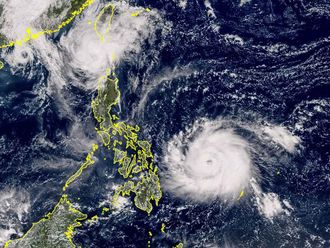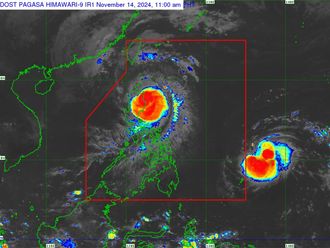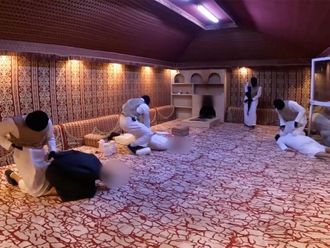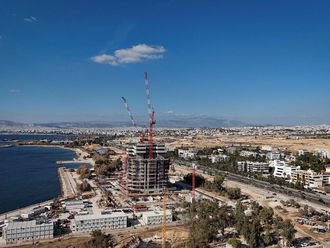Titiwin Paanan, an elder of the ethnic Aetas group in central Luzon, went up to the mountains of Maagui-agui, gave offering to the tribe's deity Apo Namalyari, and then buried the bones of the tribe members who died in several caves that were engulfed by the fire and ash of Mt Pinatubo in 1991.
"I'm now sending you to peace, to the other world," Paanan chanted as his companions walked around the skulls and other skeletal remains that they managed to gather for several days from the caves near their former homes in San Marcelino and Lomboy villages in Zambales.
For the occasion, the tribesmen built a 3 x 6 x 3 metre tomb, using rocks, ash and sand that the volcano spewed out 13 years ago. The tomb was sealed with a concrete slab.
Purtogoy Bindon, who lost his uncles, aunts, brothers, sisters, nephews, nieces and grandchildren, came all the way from Malanak to witness the interment. Many former settlers of Lomboy came from the Kanaynayan resettlement, in the hilly parts of San Marcelino, for the event. After the interment, the Aetas shared stories on how their loved ones were killed by the Pinatubo eruption. Sebio Pakawen and several survivors of the Pinatubo eruption retrieved 30 skeletal remains from four caves which they reached by climbing steep slopes and venturing into least travelled trails up in the Maagui-agui mountain.
Almost 500 Aetas, including children, were killed on that fateful day in June 1991. Many of them refused to go down from the mountain and preferred to die in the bosom of their ancestral land.
The rest of the bones were eaten by wild boars, bats and monitor lizards, Pakawen said, adding he and his companions have scheduled another day to reach a fifth cave which is located on the eastern and highest tip of the Zambales mountain range.












